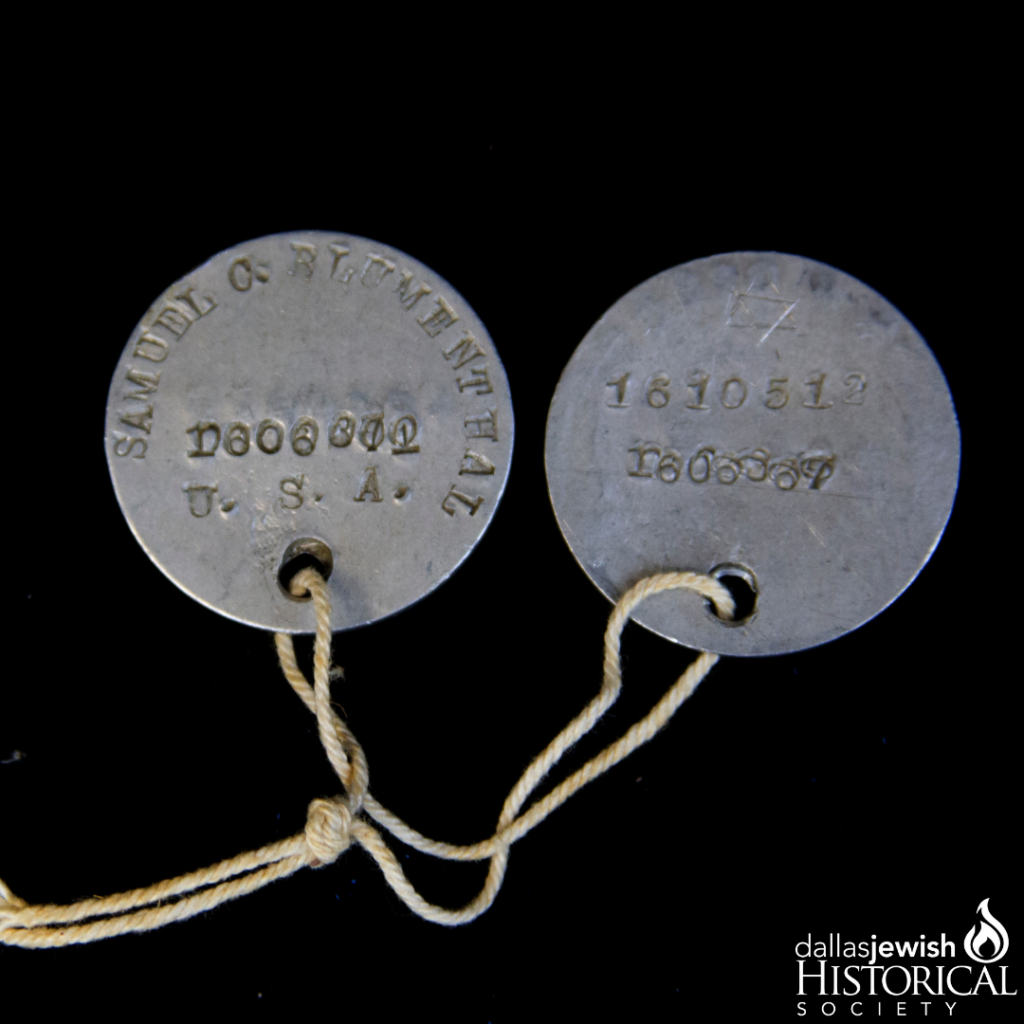
Samuel Charles Blumenthal’s (1893-1978) WWI dog tags are located in the DJHS archive. Before World War I, Mr. Blumenthal lived in Georgia and was 23 years old. His name is stamped along the curved top edge of the alluminum tag. After July 26, 1918, all tags could be stamped with the letter indicating religion, i.e. “C”, “H”, or “P”. Mr. Blumenthal didn’t have H for Hebrew on his tag but it looks like he scratched a Star of David on his tag. His service number punched in the middle.
The dog tag was introduced to military srvice members in December 20, 1906. During the American Civil War there were so many unknown casualties that the American government decided soldiers needed to carry an identifying tag with them. What started as a single circular aluminum disc to be worn as an identification tag became required in 1913, and in 1916 the second dog tag was required–one to identify the soldier, and one to mark a coffin or burial site. The World War I dog tag was aluminum, the size of a silver half dollar, and imprinted with the individual’s name, rank, regiment, and branch of service to be worn around the neck. Eventually they switched to rectangular shaped dog tags during WWII which is the shape we often think of dog tags.
https://www.medalsofamerica.com/blog/the-history-of-dog-tags
https://www.med-dept.com/articles/u-s-army-ww2-dog-tags/
http://freepages.rootsweb.com/~cacunithistories/military/American%20Dog%20Tags.html

Recent Comments